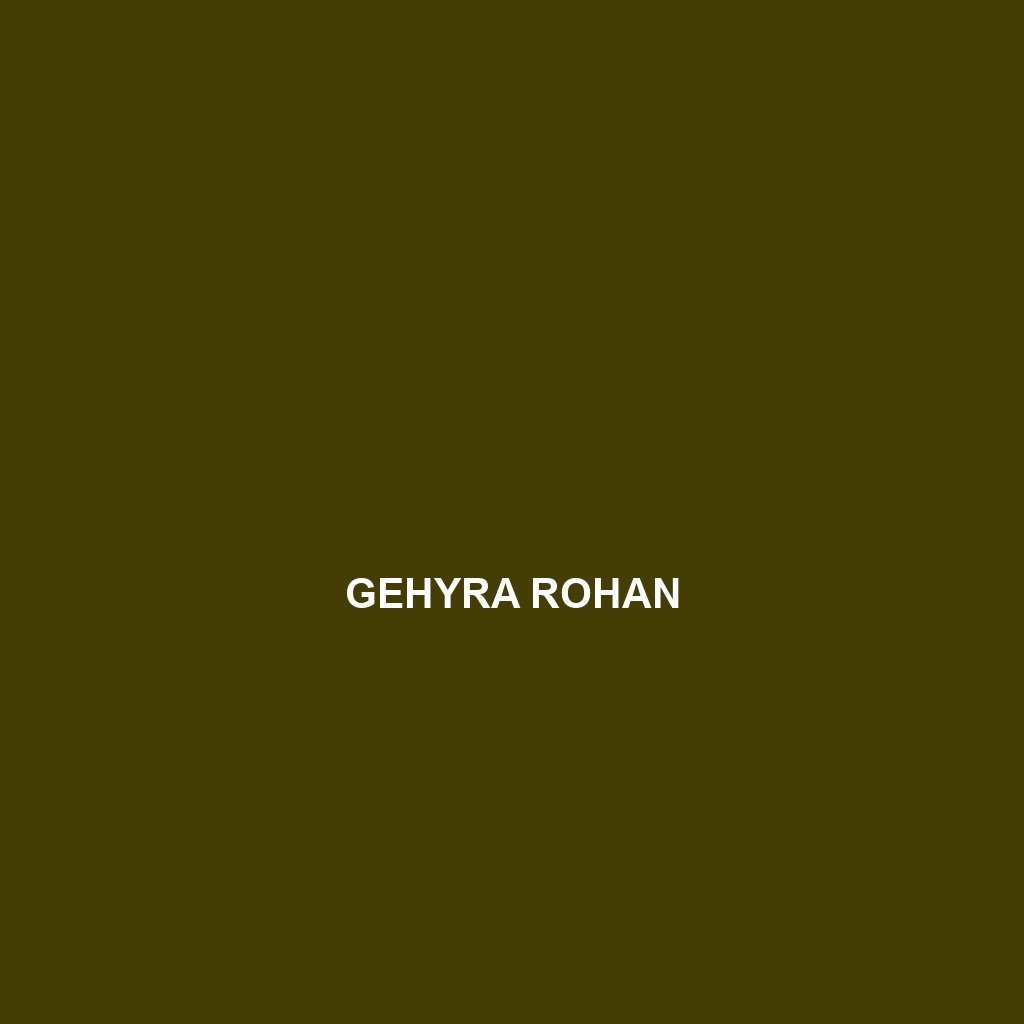Common Name
Gehyra robusta
Scientific Name
Gehyra robusta
Habitat
The Gehyra robusta, commonly known as the robust dtella, primarily inhabits a variety of environments in Australia, particularly in coastal areas. This species is predominantly found in rainforests and savannas, exhibiting a preference for humid subtropical climates where it can effectively thrive. Additionally, the robust dtella is often spotted in temperate forests, showcasing its adaptability to different climatic zones. The availability of rocky crevices and tree hollows plays a crucial role in providing shelter and breeding grounds for this fascinating reptile. Furthermore, they can occasionally be seen in altered habitats, such as urban areas and agricultural lands, demonstrating their adaptability in various environmental conditions.
Physical Characteristics
The Gehyra robusta is a medium-sized gecko, typically reaching lengths of 10 to 15 centimeters (approximately 4 to 6 inches). This species exhibits a robust and flat body structure, with a distinctively broad head that contributes to its overall stout appearance. The skin is adorned with a smooth texture and is typically brown to gray in color, featuring unique dark banding and irregular spots that enable effective camouflage among foliage and bark. Notable features include its large, bulging eyes that enhance nocturnal vision and its adhesive toe pads, which facilitate climbing and enable it to navigate various surfaces with ease.
Behavior
The Gehyra robusta is primarily nocturnal, actively foraging and hunting during the night, which aids in avoiding daytime predators. Socially, they are somewhat solitary creatures, although they may come together during the breeding season. Their typical behaviors include basking on warm surfaces during dusk and engaging in quick, agile movements to capture insects. Interestingly, this species exhibits territorial behaviors, particularly males who engage in displays to ward off competition. Mating rituals involve elaborate courtship behaviors, where males perform exaggerated movements to attract females, making it a captivating observation for herpetologists and enthusiasts alike.
Diet
The Gehyra robusta is primarily an insectivore, feeding on various small insects such as crickets, beetles, and moths that become active during nighttime. Their hunting strategy is characterized by swift movements and precise strikes, enabling them to capture prey effectively. Occasionally, they may consume small fruits and nectar, showcasing some omnivorous behavior, though insects remain their primary food source. The diet of the robust dtella is essential for maintaining the ecological balance, as it plays a role in controlling insect populations within its habitat.
Reproduction
The reproductive cycle of the Gehyra robusta typically occurs during the warmer months, with mating activities peaking in spring. After a brief courtship, the female lays two to four eggs in a hidden location, often beneath leaf litter or within rock crevices. The gestation period lasts approximately 8 to 12 weeks, after which the hatchlings emerge fully formed and ready to fend for themselves. Parental care is absent in this species, which is common among many reptiles. The young are independent from birth, gradually growing and developing their hunting skills while avoiding predators.
Conservation Status
Currently, the Gehyra robusta is classified as least concern by the International Union for Conservation of Nature (IUCN). While this suggests that the species is not currently facing any major threat, ongoing habitat destruction due to urbanization and climate change poses potential risks. Conservation efforts aimed at habitat preservation are crucial to ensure the stability of this species’ populations. Monitoring the impacts of invasive species and environmental changes is also essential to maintain healthy ecosystems where the robust dtella resides.
Interesting Facts
One of the most intriguing aspects of the Gehyra robusta is its ability to regenerate its tail if lost, a survival tactic common to many gecko species. The regenerated tail, however, differs in texture and may not possess the same coloration and patterning as the original. Additionally, the robust dtella has a unique vocalization capability, often emitting soft calls, especially during the breeding season, which can be a fascinating observation for wildlife enthusiasts.
Role in Ecosystem
The Gehyra robusta plays a significant ecological role within its environment as a natural predator of insects. By keeping insect populations in check, they contribute to the health of their habitats, preventing overpopulation of pests that might otherwise disrupt the ecological balance. Their presence also serves as a food source for larger predators, making them an integral part of the food web. Moreover, their foraging habits can aid in seed dispersal, assisting in the propagation of various plant species and thereby enhancing the biodiversity of their ecosystems.
